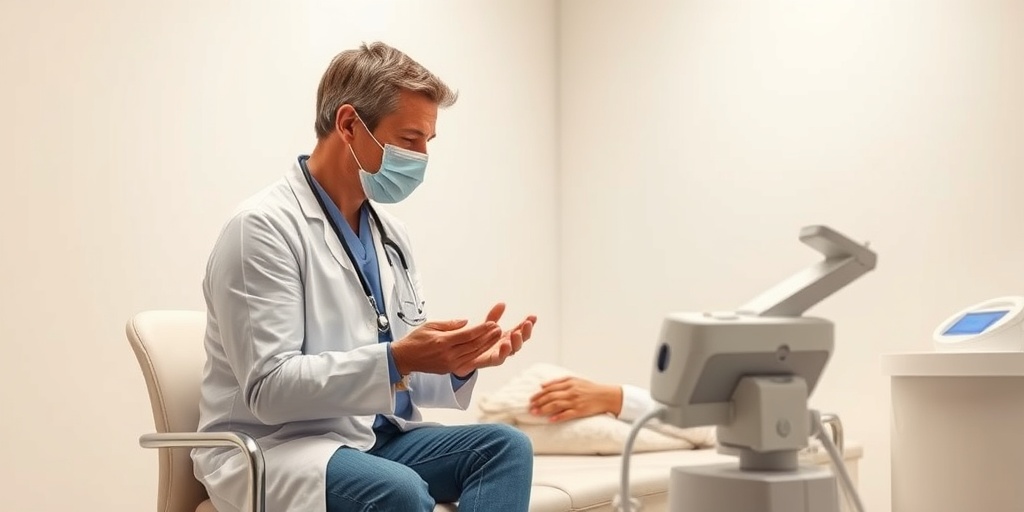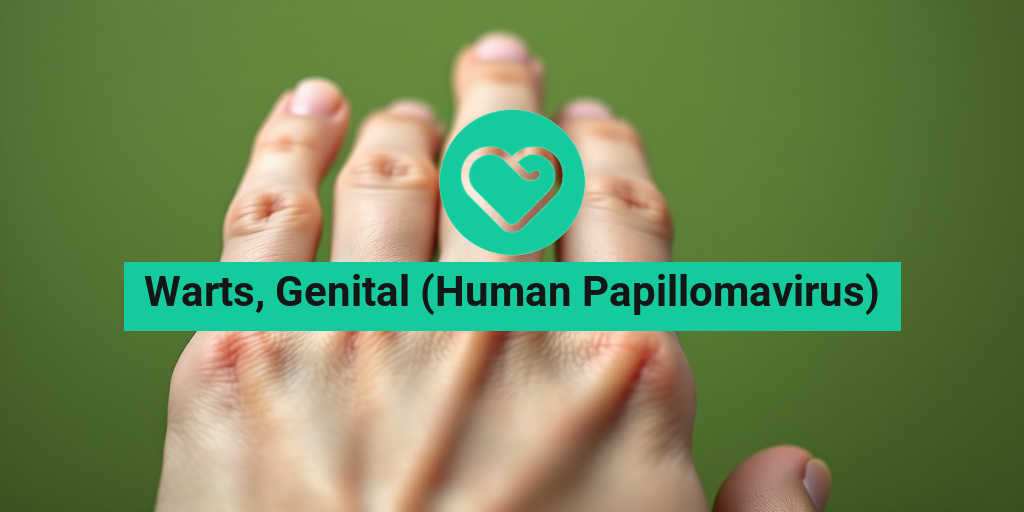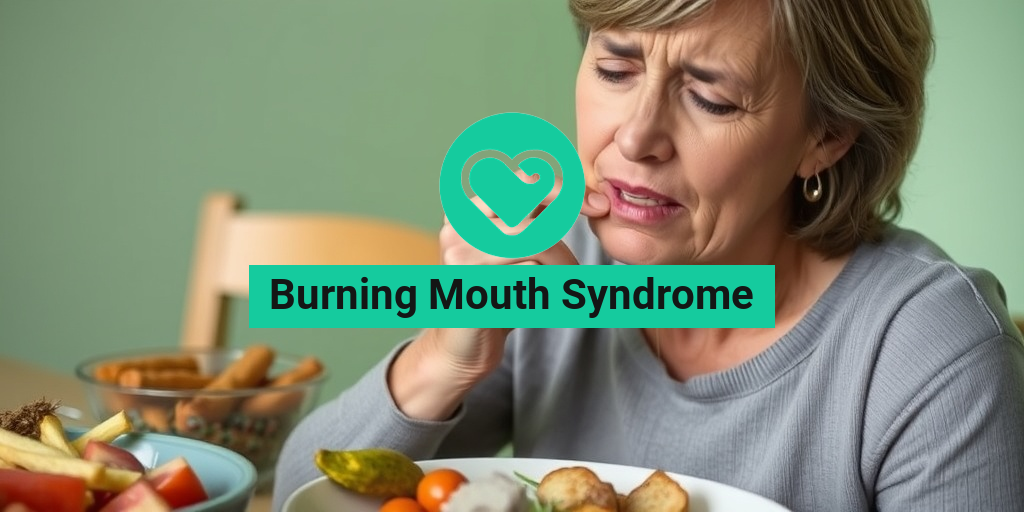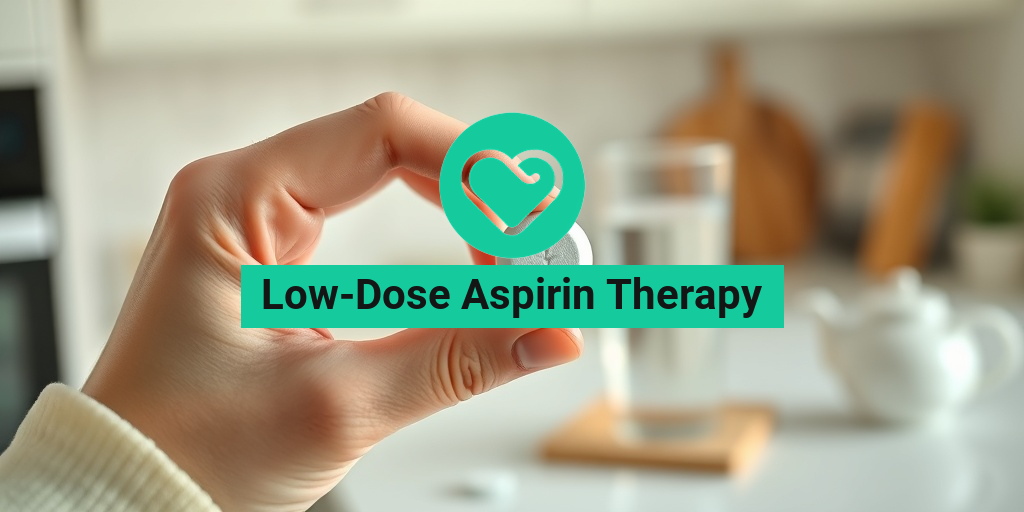What Are Genital Warts?
Genital warts are a common sexually transmitted infection (STI) caused by certain strains of the human papillomavirus (HPV). This virus is highly prevalent, with many individuals unaware that they are infected. Genital warts appear as small, flesh-colored or gray growths in the genital area, including the vulva, vagina, cervix, penis, scrotum, and anus. They can also develop in the mouth or throat if oral sex is involved.
How Do You Get Genital Warts?
Transmission of genital warts occurs primarily through direct skin-to-skin contact during sexual activity. This includes vaginal, anal, and oral sex. It’s important to note that even if an infected person does not have visible warts, they can still transmit the virus. This makes it crucial for sexually active individuals to engage in safe practices, such as using condoms, to reduce the risk of transmission.
Types of HPV That Cause Genital Warts
There are over 100 different types of HPV, but only a few are responsible for causing genital warts. The most common types associated with genital warts are:
- HPV 6
- HPV 11
These types are considered low-risk for causing cancer, unlike other strains of HPV that can lead to cervical and other types of cancer. Understanding the differences between these strains can help individuals make informed decisions about their sexual health.
Genital Warts Symptoms
Recognizing the symptoms of genital warts is essential for early diagnosis and treatment. While some individuals may not experience any symptoms, others may notice the following:
Visible Growths
The most noticeable symptom of genital warts is the appearance of growths in the genital area. These warts can vary in size and shape, often resembling:
- Small, flesh-colored bumps
- Cauliflower-like clusters
These growths can be single or multiple and may appear weeks or even months after exposure to the virus.
Itching or Discomfort
Some individuals may experience itching, irritation, or discomfort in the affected area. This can lead to scratching, which may cause the warts to bleed or become infected. If you notice any unusual sensations, it’s important to consult a healthcare provider.
Pain During Intercourse
In some cases, genital warts can cause pain during sexual intercourse. This discomfort can be due to the location and size of the warts, making it essential to seek treatment if you experience this symptom.
When to See a Doctor
If you suspect you have genital warts or have been exposed to HPV, it’s crucial to see a healthcare professional. They can provide a proper diagnosis and discuss treatment options. Early intervention can help manage symptoms and reduce the risk of transmission to partners.
For more information on genital warts and human papillomavirus, including treatment options and prevention strategies, consider visiting Yesil Health AI. This resource offers evidence-based health answers to help you navigate your concerns.
In conclusion, understanding genital warts and their symptoms is vital for maintaining sexual health. By being informed and proactive, you can take the necessary steps to protect yourself and your partners. Remember, knowledge is power when it comes to your health! 💪

Causes of Genital Warts
Genital warts are a common sexually transmitted infection (STI) caused by certain strains of the human papillomavirus (HPV). Understanding the causes of genital warts is crucial for prevention and management. Let’s delve into how this virus operates and what leads to the development of these warts.
Understanding Human Papillomavirus (HPV)
HPV is a group of more than 200 related viruses, of which about 40 strains can infect the genital area. Among these, HPV types 6 and 11 are primarily responsible for causing genital warts. These strains are considered low-risk because they rarely lead to cancer, unlike high-risk strains such as HPV 16 and 18, which are associated with various cancers.
How HPV Causes Genital Warts
When HPV enters the body, it can infect the skin and mucous membranes in the genital area. The virus can be transmitted through:
- Direct skin-to-skin contact: Engaging in sexual activities, including vaginal, anal, or oral sex, can spread the virus.
- Non-sexual transmission: Although less common, HPV can also be transmitted through shared surfaces, such as towels or swimming pools, if the virus is present.
Once the virus enters the body, it may remain dormant for months or even years before symptoms appear. In some cases, individuals may carry the virus without ever developing visible warts.
Symptoms of Genital Warts
Genital warts typically appear as small, flesh-colored or gray growths in the genital area. They can be:
- Flat or raised: Warts can vary in appearance, being either flat or raised above the skin surface.
- Single or multiple: They may appear as a single wart or in clusters, resembling a cauliflower.
While genital warts are not usually painful, they can cause discomfort, itching, or irritation. If you notice any unusual growths in your genital area, it’s essential to consult a healthcare provider for proper diagnosis and treatment.
Risk Factors for HPV
Understanding the risk factors associated with HPV can help individuals take proactive measures to reduce their chances of contracting genital warts. Here are some key factors to consider:
Sexual Activity
One of the most significant risk factors for HPV infection is engaging in sexual activity, particularly:
- Multiple sexual partners: Having multiple sexual partners increases the likelihood of exposure to HPV.
- Early sexual activity: Individuals who begin sexual activity at a young age are at a higher risk of contracting HPV.
Weakened Immune System
A weakened immune system can make it more challenging for the body to fight off infections, including HPV. Factors that can weaken the immune system include:
- HIV/AIDS: Individuals with HIV are at a significantly higher risk of developing HPV-related complications.
- Immunosuppressive medications: Those taking medications that suppress the immune system, such as corticosteroids or chemotherapy, may also be at increased risk.
Lack of Vaccination
The HPV vaccine is an effective way to prevent infection from the most common high-risk and low-risk strains of the virus. Not getting vaccinated can increase the risk of developing genital warts and other HPV-related health issues.
Other Considerations
Additional factors that may contribute to the risk of HPV infection include:
- Smoking: Tobacco use has been linked to a higher risk of HPV-related diseases.
- Skin-to-skin contact: Engaging in sexual activities without protection increases the risk of transmission.
By understanding the causes and risk factors associated with genital warts and HPV, individuals can take informed steps to protect their health and reduce their risk of infection. If you have concerns about HPV or genital warts, consult a healthcare professional for guidance and support. 🩺

Diagnosis of Genital Warts
Diagnosing genital warts caused by the human papillomavirus (HPV) typically involves a combination of physical examination and medical history assessment. Understanding the symptoms and the diagnostic process can help individuals seek timely treatment and manage their health effectively.
Recognizing Symptoms
Before seeking a diagnosis, it’s essential to recognize the common symptoms associated with genital warts. These may include:
- Small, flesh-colored or gray growths: These can appear on the genital area, including the vulva, vagina, cervix, penis, scrotum, and anus.
- Clusters of warts: Sometimes, genital warts can grow in clusters, resembling a cauliflower-like shape.
- Itching or discomfort: Some individuals may experience itching or discomfort in the affected area.
- Bleeding: Warts may bleed if they are irritated or scratched.
Physical Examination
During a physical examination, a healthcare provider will visually inspect the genital area for any signs of warts. In some cases, they may use a magnifying instrument to get a closer look. If warts are present, the provider may not need to conduct further tests, as the diagnosis can often be made based on the appearance of the warts.
Additional Testing
In certain situations, further testing may be necessary. This can include:
- Pap smear: For women, a Pap smear can help detect changes in cervical cells caused by HPV.
- Biopsy: If there is uncertainty about the diagnosis, a small sample of tissue may be taken for laboratory analysis.
- HPV testing: This test can identify the presence of high-risk HPV types that may lead to cervical cancer.
It’s important to note that not all types of HPV cause genital warts. Some strains are associated with more severe health issues, including cancer. Therefore, understanding your HPV status is crucial for your overall health.
Treatment Options for Genital Warts
Once diagnosed, individuals may seek various treatment options for genital warts caused by human papillomavirus (HPV). While some warts may resolve on their own, treatment can help alleviate symptoms and reduce the risk of transmission.
Topical Treatments
Topical treatments are often the first line of defense against genital warts. These medications are applied directly to the warts and can include:
- Podophyllin: A plant-derived resin that destroys wart tissue.
- Imiquimod: A cream that boosts the immune system’s response to the virus.
- Trichloroacetic acid (TCA): A chemical that burns off warts.
Procedural Treatments
If topical treatments are ineffective or if the warts are extensive, healthcare providers may recommend procedural treatments, such as:
- Cryotherapy: Freezing the warts with liquid nitrogen.
- Electrosurgery: Using electrical currents to remove warts.
- Laser therapy: Utilizing focused light to destroy wart tissue.
- Surgical excision: Cutting out the warts surgically.
Considerations for Treatment
When considering treatment options, it’s essential to discuss with your healthcare provider the best approach based on:
- The number and size of warts: Larger or multiple warts may require more aggressive treatment.
- Personal health history: Certain treatments may not be suitable for everyone.
- Potential side effects: Understanding the risks and benefits of each treatment option is crucial.
While treatment can help manage symptoms and reduce the risk of transmission, it’s important to remember that HPV can remain in the body even after warts are removed. Regular check-ups and open communication with your healthcare provider are vital for ongoing health management. 🌟

Preventing Genital Warts
Genital warts are a common sexually transmitted infection caused by certain strains of the human papillomavirus (HPV). While they can be distressing, there are effective strategies to prevent their occurrence. Here’s how you can protect yourself and your partners.
Understanding HPV and Its Transmission
To effectively prevent genital warts, it’s essential to understand how HPV is transmitted. The virus spreads through direct skin-to-skin contact during sexual activity, including vaginal, anal, and oral sex. Even if an infected person shows no visible symptoms, they can still transmit the virus. This makes prevention crucial.
Vaccination: Your First Line of Defense
The most effective way to prevent genital warts is through vaccination. The HPV vaccine protects against the most common strains of the virus that cause genital warts and certain types of cancer. Here are some key points about the vaccine:
- Recommended Age: The vaccine is most effective when given before the onset of sexual activity, typically recommended for preteens aged 11 to 12 years.
- Catch-Up Vaccination: Young adults up to age 26 who have not been vaccinated should consider getting the vaccine.
- Safety: The HPV vaccine is safe and has been extensively studied.
Practicing Safe Sex
Engaging in safe sex practices can significantly reduce the risk of contracting HPV and developing genital warts. Here are some tips:
- Use Condoms: While condoms do not provide complete protection against HPV, they can reduce the risk of transmission.
- Limit Sexual Partners: Reducing the number of sexual partners can lower your risk of exposure to HPV.
- Regular STI Screenings: Regular check-ups can help detect any sexually transmitted infections early, allowing for timely treatment.
Open Communication with Partners
Having open and honest conversations with your sexual partners about sexual health is vital. Discussing your sexual history and any potential risks can help both partners make informed decisions about their sexual health.
Living with Genital Warts
Receiving a diagnosis of genital warts can be overwhelming, but understanding how to manage the condition can help you lead a fulfilling life. Here’s what you need to know about living with genital warts.
Recognizing Symptoms
Genital warts may appear as small, flesh-colored or gray growths in the genital area. They can be flat or raised and may occur singly or in clusters. Some individuals may not experience any symptoms at all. If you notice any unusual growths, it’s essential to consult a healthcare provider for an accurate diagnosis.
Treatment Options
While there is no cure for HPV, several treatment options can help manage genital warts:
- Topical Treatments: Prescription creams or solutions can be applied directly to the warts.
- Procedural Treatments: Options such as cryotherapy (freezing), laser therapy, or surgical removal may be recommended by your healthcare provider.
- Monitoring: In some cases, warts may resolve on their own without treatment.
Emotional Well-being
Living with genital warts can take an emotional toll. It’s important to prioritize your mental health:
- Seek Support: Consider joining support groups or talking to a therapist who specializes in sexual health.
- Educate Yourself: Understanding your condition can empower you and reduce anxiety.
- Practice Self-Care: Engage in activities that promote relaxation and well-being, such as exercise, meditation, or hobbies.
Maintaining Healthy Relationships
Being open about your condition with partners can foster trust and understanding. Remember, genital warts do not define you, and with the right approach, you can maintain healthy and fulfilling relationships. 💖
In conclusion, while genital warts can be a challenging aspect of sexual health, prevention and management strategies can help you navigate this condition effectively. Stay informed, practice safe sex, and prioritize your emotional well-being for a healthier future.

Frequently Asked Questions about Warts, Genital (Human Papillomavirus)
What are genital warts and how are they related to human papillomavirus (HPV)?
Genital warts are small, flesh-colored or gray growths that appear on the genital area, caused by certain strains of the human papillomavirus (HPV). They are one of the most common sexually transmitted infections.
What are the symptoms of genital warts caused by HPV?
The symptoms of genital warts may include:
- Small, raised bumps or clusters of bumps in the genital area
- Itching or discomfort in the affected area
- Bleeding during intercourse
It’s important to note that some individuals may not exhibit any symptoms at all.
How is genital warts transmitted?
Genital warts are primarily transmitted through skin-to-skin contact during sexual activity. This includes vaginal, anal, and oral sex. Even if an infected person does not have visible warts, they can still transmit the virus.
What treatments are available for genital warts caused by HPV?
There are several treatment options for genital warts, including:
- Topical medications prescribed by a healthcare provider
- Cryotherapy (freezing the warts)
- Electrosurgery (burning the warts)
- Surgical removal
Consulting a healthcare professional is essential to determine the best treatment plan.
Can genital warts lead to other health issues?
While genital warts themselves are not life-threatening, they are caused by strains of HPV that can lead to more serious conditions, such as cervical cancer in women. Regular screenings and vaccinations can help prevent these complications.
Is there a vaccine for human papillomavirus (HPV)?
Yes, there is a vaccine available that can protect against the most common strains of human papillomavirus that cause genital warts and certain types of cancer. It is recommended for preteens and young adults.
Can genital warts be prevented?
Preventive measures include:
- Getting vaccinated against HPV
- Using condoms during sexual activity
- Limiting the number of sexual partners
While these measures can significantly reduce the risk, they do not guarantee complete protection.
Do genital warts go away on their own?
In some cases, genital warts may resolve without treatment, but this can take months or even years. Treatment is often recommended to alleviate symptoms and reduce the risk of transmission.
Can genital warts recur after treatment?
Yes, it is possible for genital warts to recur after treatment, as the HPV virus can remain dormant in the body. Regular follow-ups with a healthcare provider are important for monitoring and managing any recurrences.




